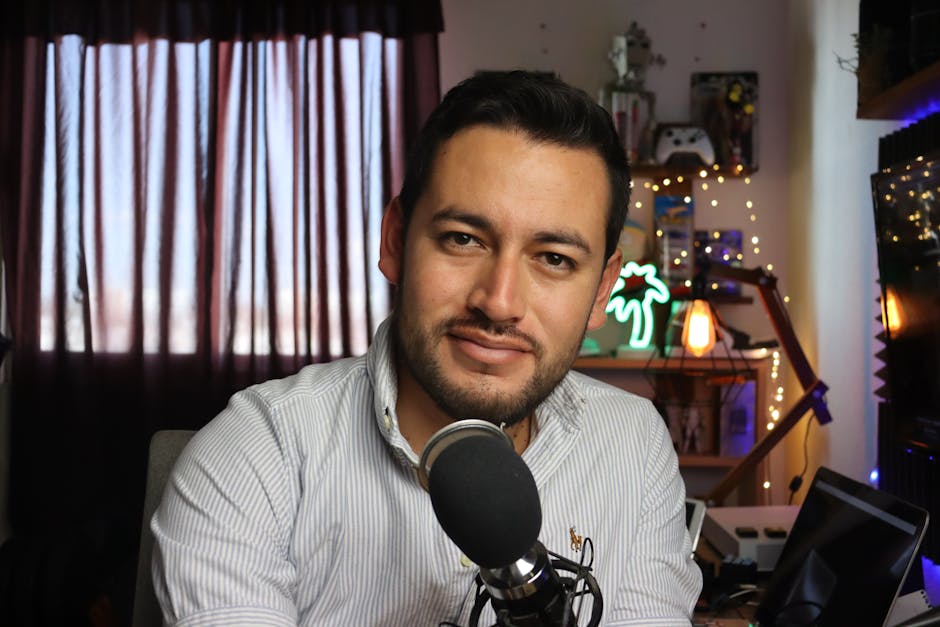My Guide to Creating a Strong Call-to-action (cta) for Your Podcast.
My Guide to Creating a Strong Call-to-action (CTA) for Your Podcast
As podcasters, we pour our hearts and souls into creating compelling content, sharing stories, and delivering valuable insights. But what happens after the last word is spoken, the outro music fades, and the episode wraps up? Without a clear, compelling call-to-action (CTA), all that effort might lead to nothing more than a passive listen. A strong CTA isn’t just about asking listeners to do something; it’s about guiding them on the next step of their journey with your brand, transforming passive consumption into active engagement and measurable growth for your show.
In this guide, I’m sharing my insights into crafting CTAs that truly resonate with your podcast audience. We’ll dive deep into understanding the unique psychology of podcast listeners and how to motivate them to take the specific actions that matter most to your podcast’s success, moving beyond generic prompts to create truly impactful invitations.
Unpacking the Podcast Listener’s Mind: Why Your CTA Needs a Special Touch
Unlike reading a blog post or watching a video, podcast listening is often a hands-free, multi-tasking activity. Listeners might be driving, exercising, commuting, or doing chores. This unique consumption environment means your CTA can’t rely on visual cues or immediate clickability in the same way a website CTA does. You’re asking for a mental shift and a future action, not an instant button press. Understanding this context is the first crucial step in designing effective podcast CTAs.
Your listeners are building a relationship with your voice, your personality, and your content. This auditory intimacy creates a powerful bond, but it also requires a nuanced approach to asking for their time and effort. A strong podcast CTA leverages this connection, speaking directly to the listener’s desire for more value, community, or continued engagement with your specific show.
Translating Auditory Engagement into Tangible Action
The challenge is to bridge the gap between the auditory experience and a concrete action. This requires clarity, brevity, and a strong sense of purpose. A listener isn’t going to pull over their car to write down a complex URL or remember five different things you want them to do. Your call needs to be simple, memorable, and offer a clear benefit that justifies the effort.
Crafting Irresistible Invitations: The Anatomy of a Powerful Podcast CTA
A strong CTA isn’t just a command; it’s an invitation that feels natural and valuable. It should seamlessly integrate into your content, feeling like a helpful suggestion rather than a sales pitch. Here’s how to build those compelling invitations for your podcast.

Clarity is King: What to Say and How
Your listeners are processing information aurally, often with distractions. Ambiguity is the enemy of action. Your CTA must be crystal clear about what you want them to do, why they should do it, and how they can do it. Use simple, direct language. Avoid jargon or overly clever phrasing that might confuse. For example, instead of “Engage with our digital ecosystem,” say “Visit our website at [YourWebsite.com].”
- Be Specific: “Leave a review on Apple Podcasts” is better than “Support the show.”
- Provide a Clear Path: “Go to [YourWebsite.com]/bonus to download the free guide” is actionable.
- Repeat if Necessary (Subtly): Especially for URLs or specific instructions, a gentle repeat can aid recall.
Urgency Without Pushiness: Motivating Immediate Action
While you can’t always create immediate urgency in an auditory medium, you can imply timeliness or the benefit of acting sooner rather than later. This isn’t about creating artificial scarcity, but about highlighting the value that awaits them. For instance, if you’re promoting a limited-time offer, make that clear. If it’s about joining a community, emphasize the ongoing conversation they’ll miss if they delay. The key is to motivate without making listeners feel pressured or annoyed.
The Power of a Single, Focused Ask
Resist the urge to ask for too many things at once. A confused listener takes no action. Decide on the single most important action you want your listener to take after a particular episode or segment. Is it to subscribe? To leave a review? To visit a specific landing page? Focus on that one goal per CTA, especially within a single segment of your podcast. You can have different CTAs throughout your episode or across different episodes, but each individual prompt should have a singular focus.
Strategically Placing Your Calls: Where and When to Prompt Action in Your Episodes
The placement of your CTA is as important as its content. Unlike a website where a CTA can be visually prominent, in a podcast, timing is everything. You need to catch your listener at a point of high engagement or natural transition.
Pre-Roll Prompts: Setting the Stage
A brief CTA at the very beginning of your episode (pre-roll) can be effective for actions that require minimal effort or are recurring, like subscribing or following. It catches new listeners before they dive too deep and reminds existing ones. Keep it very short and sweet, as listeners are eager to get to the main content. “New to the show? Hit subscribe so you don’t miss an episode!” is a good example.
Mid-Roll Momentum: Capitalizing on Engagement
Mid-roll is often the sweet spot. Your listener is engaged with your content, and you’ve built rapport. This is an excellent place for more involved CTAs, like visiting a specific landing page for a resource related to the episode’s topic, or joining your email list. The key is to integrate it naturally, perhaps after a segment transition or during a short break. Connect the CTA directly to the value they’re already receiving from the episode. For example, “If you’re finding this discussion on [topic] helpful, you’ll love the free checklist we’ve created to help you implement these strategies. Grab it at [YourWebsite.com]/checklist.”
Post-Roll Power: The Lasting Impression
The outro is your final opportunity to guide your listener. This is a prime spot for asking for reviews, shares, or directing them to your main website or social media channels. By this point, they’ve consumed the entire episode and are likely feeling the full impact of your content. This is also a good place for your primary, evergreen CTA – the one you want every listener to eventually take, like subscribing or joining your community. Remember, don’t overwhelm them with too many options here. One or two strong CTAs are ideal.
Beyond the spoken word, don’t forget your Optimizing Your Podcast Show Notes. These digital companions to your episodes are goldmines for clickable CTAs. Include all relevant links, specific instructions, and supplementary materials that support your audio prompts.
Beyond the Listen: Diversifying Your Podcast CTA Goals
Your podcast CTAs shouldn’t just be about growing listenership. They should align with your broader podcasting and business objectives. Think about the entire listener journey and what actions move them further down that path.
Nurturing Community and Connection
A strong CTA can transform solitary listeners into an engaged community. This might involve inviting them to:
- Join a private Facebook group or Discord server.
- Follow you on specific social media platforms (e.g., “Connect with me on LinkedIn for more insights”).
- Sign up for your email newsletter for exclusive content or updates.
Driving Specific Conversions and Support
For many podcasters, the show is a vehicle for other goals. Your CTAs can directly support these:
- Product/Service Promotion: “Learn more about our [product/service] at [YourWebsite.com]/[product].”
- Patreon/Support: “If you’ve enjoyed this episode, consider supporting the show on Patreon at [Patreon.com]/[YourPodcast].”
- Event Registration: “Register for our upcoming webinar on [topic] at [YourWebsite.com]/webinar.”
- Feedback/Surveys: “Help us improve by taking our quick listener survey at [SurveyLink].”
Measuring the Echo: Tracking the Success of Your Podcast CTAs
A CTA isn’t truly strong until you know it’s working. Without measurement, you’re just guessing. While direct click tracking for audio CTAs can be challenging, there are powerful ways to gauge their effectiveness and refine your approach.
Leveraging Unique URLs and Landing Pages
The most effective way to track audio CTAs is by using unique, trackable URLs. Instead of just saying “Visit our website,” create a specific landing page or use a unique slug for each CTA. For instance, if you’re promoting a new guide in Episode 50, your CTA could be “Go to [YourWebsite.com]/episode50guide.” This allows you to see exactly how many people visited that specific link after hearing the CTA in that episode. Tools like Google Analytics can then give you deep insights into traffic,




Post Comment